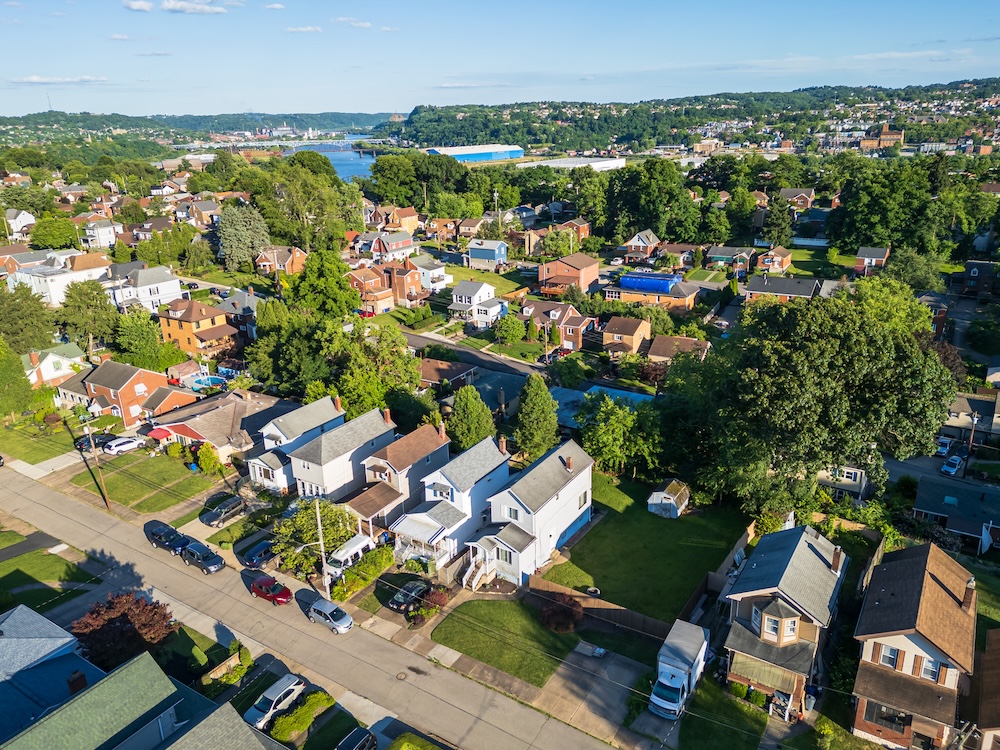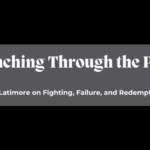Pittsburgh, a city with a rich tapestry of history, offers a compelling story woven from the experiences of its diverse neighborhoods. Each corner of this urban landscape carries tales of resilience, cultural blending, and evolution, inviting exploration into the lives of those who called it home.
From its early settlements to the waves of immigrants who shaped its identity, Pittsburgh stands as a testament to the American story of coexistence and adaptation. Neighborhoods like Polish Hill and the South Side Flats not only showcase architectural heritage but also reveal the influence of various cultures that have contributed to the region’s vibrant character.
In this article, we will journey through the historical roots of Pittsburgh’s neighborhoods, uncovering the often-overlooked narratives that have persisted through generations. Join us as we celebrate the city’s cultural richness and examine the unique elements that continue to define Pittsburgh today.
The Early Settlements of Pittsburgh
Pittsburgh’s neighborhoods have deep historical roots. Originally, Native American tribes like the Shawnee and Seneca inhabited the area. In the mid-1700s, European settlers came.
Pittsburgh’s strategic location at the confluence of the Allegheny and Monongahela Rivers made it vital. It became a hub for trade and growth. Fort Pitt, built by the British, was key in this development.
As time passed, various ethnic groups settled in the area. Each group left a mark that shaped Pittsburgh’s cultural diversity.
Here is a simple timeline of the early settlements:
| Year | Event |
|---|---|
| 1758 | Fort Pitt established |
| 1764 | Start of Pittsburgh as a town |
| 1794 | Whiskey Rebellion impacts region |
Some of the city’s first neighborhoods include:
- Downtown: The heart of early commerce.
- Mt. Washington: Known for its coal mines.
- East Liberty: Once a bustling market area.
These early settlements laid the groundwork for Pittsburgh’s modern neighborhoods. Today, each area carries the legacy of its beginnings, reflected in architecture and culture.
The Influence of Immigrant Contributions
Pittsburgh’s neighborhoods have been greatly influenced by immigrants. Waves of new arrivals came to Pittsburgh in search of better opportunities. Each group brought unique cultures, traditions, and skills. These contributions helped shape the city’s identity and growth.
For example, Italians, Germans, and Irish people started businesses and built churches. They established communities with strong local ties. Their influence is still seen in Pittsburgh’s cultural festivals and specialty foods.
The History of Polish Hill
Polish Hill stands out as a vibrant ethnic neighborhood. In the late 1800s and early 1900s, many Polish immigrants settled here. They worked in the steel mills and railroads, seeking a new life for their families.
The heart of this community is the Immaculate Heart of Mary Church. Its grand structure represents the pride of Polish heritage. Even today, Polish Hill remains a close-knit community, honoring its roots and traditions.
Architectural Heritage of the Neighborhoods
Pittsburgh’s neighborhoods boast a rich architectural heritage. Buildings tell stories of the city’s past and its diverse influences.
Victorian-style homes are common in areas like Shadyside and Highland Park. These homes feature intricate woodwork and spacious porches. In contrast, the Strip District showcases old warehouses turned into trendy lofts and markets.
A tour of the city reveals stunning architecture, each style reflecting its era and cultural impact. Visitors can see the blend of old charm and modern flair throughout Pittsburgh’s neighborhoods.
The History of Polish Hill
Polish Hill is one of Pittsburgh’s unique neighborhoods with deep roots in Polish culture. Established in the late 1800s, it became a haven for Polish immigrants seeking work in the steel industry. These settlers brought with them rich traditions that shaped the area.
The focal point of Polish Hill is the Immaculate Heart of Mary Church, built in 1905. Its grand architecture is a testament to the community’s dedication and spirit.
Over the decades, Polish Hill has evolved while retaining its cultural essence. The neighborhood is known for its narrow, winding streets and row houses. It offers a mix of old-world charm and modern-day vibrancy.
In recent years, Polish Hill has attracted younger residents drawn by its sense of community and its proximity to downtown Pittsburgh. Efforts to preserve historic sites and celebrate Polish heritage continue to thrive.
Key Highlights:
- Established: Late 1800s
- Cultural Anchor: Immaculate Heart of Mary Church
- Character: Narrow streets and historic homes
- Current Trends: Blending tradition with modern living
Polish Hill remains a charming testament to the enduring legacy and cultural contributions of its early settlers.
Architectural Heritage of the Neighborhoods
Pittsburgh’s neighborhoods are rich in architectural history. Each area traces unique roots, showcasing a range of styles and eras. Let’s explore a few key architectural highlights.
Historic Styles in Pittsburgh Neighborhoods:
- Downtown:
- Features classic skyscrapers and beaux-arts buildings.
- PPG Place is a notable postmodern icon.
- South Side:
- Known for its well-preserved 19th-century brick rowhouses.
- Offers Gothic Revival churches.
- Shadyside:
- Boasts Victorian and Colonial Revival homes.
- Iconic large porches and detailed cornices.
- Lawrenceville:
- Popular for mill and workers’ housing.
- Italianate and Greek Revival styles are prominent.
Architectural Periods:
| Period | Style Example | Location |
|---|---|---|
| 19th Century | Victorian | Shadyside |
| Early 20th C. | Beaux-Arts | Downtown |
| Late 20th C. | Postmodern | PPG Place |
These neighborhoods and styles reflect Pittsburgh’s growth and diversity. Each area tells a story through its architecture, showcasing the city’s rich history and evolution.
Historical Significance of the South Side Flats
The South Side Flats is a neighborhood with deep historical roots. In the 19th century, it was known for its thriving industrial activity. Steel mills and factories dotted the area, drawing workers from near and far. The community developed unique rowhouses made of brick, which still exist today. These homes reflect the architectural style of that era and hold historic value. The South Side also became a melting pot, where diverse immigrant groups contributed to its vibrant culture.
Key Attractions Today
Today, the South Side Flats is a bustling area with much to offer. It is famous for its lively business district along East Carson Street. This stretch features a variety of shops, restaurants, and entertainment venues. The neighborhood also boasts beautiful parks, offering green spaces for visitors and residents to enjoy. Additionally, historic buildings serve new purposes, hosting everything from art galleries to boutique shops. The blend of old and new makes the South Side Flats a unique place to explore.
Important Statistics and Demographics
The population of the South Side Flats has seen changes over the years. Here are some key statistics:
- Population: About 6,000 residents.
- Median Age: Approximately 30 years.
- Diversity: Home to a mix of ethnicities and cultures.
This area has a youthful vibe due to its proximity to universities and colleges. The South Side stands out as a community with rich historical significance and a lively present-day spirit.
The Racial Histories of Pittsburgh’s Neighborhoods
Pittsburgh’s neighborhoods have a rich and complex history. Each has its own story, shaped by various cultures and communities. Over the years, these areas have grown and evolved, reflecting broader social and economic changes.
Hidden Stories of Oak Ridge Park
Oak Ridge Park is a small yet historic part of Pittsburgh. It holds many stories that are often overlooked. In the early 1900s, this area was a thriving hub for immigrant families. People from Europe settled here, bringing with them diverse traditions and customs. Despite challenges, they built a strong community, creating a foundation for future generations. Today, Oak Ridge Park honors its past while welcoming new residents.
Sampson Acres and the Impact of Racism
Sampson Acres is another neighborhood with a deep history. For many years, racial discrimination affected its growth and development. In the mid-20th century, African American families faced housing segregation in Pittsburgh. They were often confined to specific areas like Sampson Acres. This separation limited their opportunities and resources. Despite these obstacles, the residents showed resilience. They formed community groups and supported local businesses, gradually transforming Sampson Acres into a vibrant part of the city.
Transformation of the Hill District
The Hill District in Pittsburgh has a rich history rooted in culture and diversity. It emerged in the early 20th century as a vibrant hub for African-American culture. This neighborhood was once known as the “Harlem of Pittsburgh.” It was famous for its jazz clubs, theaters, and thriving community life.
From Cultural Icon to Current State
In the 1950s, the Hill District faced urban renewal projects. Many homes and businesses were demolished, forcing residents to leave. This phase drastically changed the area’s landscape and population.
Today, the Hill District is undergoing new development efforts to revive its legacy. There are projects aimed at improving housing and creating jobs. Efforts focus on preserving its rich cultural roots while adapting to modern needs.
Below is a comparison of key changes in the Hill District over the years:
| Era | Characteristics | Key Changes |
|---|---|---|
| Early 1900s | Cultural and musical hub | Growth of jazz and theaters |
| 1950s-1960s | Urban renewal | Demolition and displacement |
| Present Day | Revitalization | New developments and jobs |
The transformation of the Hill District shows a broader story of Pittsburgh’s neighborhoods. It blends deep historical roots with current efforts to honor and transform the community.
The Strip District: A Hub of Production
The Strip District is one of Pittsburgh’s most vibrant neighborhoods. It has a rich history as a center for commerce and industry. Located along the Allegheny River, it was once home to many factories and warehouses. Companies chose this area due to its easy access to transportation by river and rail.
The district was known for producing iron, steel, and glass. This production boom helped fuel Pittsburgh’s rise as an industrial giant. It was a place where raw materials transformed into finished products, ready to ship across the country.
Historical Role in Food Distribution
Besides manufacturing, the Strip District played a key role in food distribution. Starting in the early 1900s, the area became a crucial point for food wholesalers. Fresh produce, meat, and seafood arrived daily.
Many famous food companies set their bases here. Heinz, perhaps the best-known, began processing its products in the Strip. They chose the district due to its strategic location for distribution.
Key Points in the Strip District’s Evolution:
- Industrial Hub: Iron, steel, and glass production in the 19th century.
- Transportation Access: Proximity to rivers and rails made logistics easy.
- Food Distribution: Rapid growth in early 20th century with companies like Heinz.
Today, the Strip District maintains its lively spirit. It has become a place where history meets modern commerce. Visitors can explore a mix of old factories and new retail spaces. Artisans, food vendors, and specialty shops now line the streets, offering unique tastes of Pittsburgh’s past and present.
Overview of Pittsburgh’s 90 Neighborhoods
Pittsburgh is home to 90 unique neighborhoods. Each offers its own charm and history. From quiet suburbs to bustling city centers, there is a perfect fit for everyone. Known for its diverse communities, Pittsburgh has transformed over time. Once an industrial hub, it is now a vibrant city full of culture and life.
Some neighborhoods are nestled in hills, offering stunning views. Others, like the Strip District, buzz with activity and commerce. In each area, you’ll find a blend of old and new. Historic buildings stand next to modern developments, showcasing the city’s evolution.
Here’s a table highlighting a few neighborhoods:
| Neighborhood | Known For |
|---|---|
| Shadyside | Trendy shops and dining |
| Lawrenceville | Art scene and nightlife |
| Squirrel Hill | Diverse cultures and eateries |
| South Side | Bars and music venues |
| Bloomfield | Italian heritage and cuisine |
Highlights of Notable Landmarks
Pittsburgh is full of iconic landmarks. These places tell the story of the city’s past and present.
- The Duquesne Incline: Offers a stunning view of the city. It’s a favorite spot for locals and tourists alike.
- Phipps Conservatory: A beautiful botanical garden. It combines nature and art in a serene setting.
- Heinz History Center: Dive into the city’s rich history. The museum offers insights into Pittsburgh’s industrial roots.
- Point State Park: Located at the meeting of three rivers. It’s a perfect place for picnics and relaxation.
These landmarks are more than just sights. They are pieces of history that reflect Pittsburgh’s growth over time.
Local Favorites and Culinary Traditions
Pittsburgh is a food lover’s paradise. The city’s culinary scene is diverse and delicious.
- Primanti Brothers: Known for its unique sandwiches. They stack fries and slaw right inside the sandwich.
- Pierogies: These Polish dumplings are a staple. Found in many local restaurants, they are a must-try.
- Kielbasa: A flavorful sausage reflecting the city’s Eastern European roots.
- Pittsburgh Salad: A twist on the classic salad. It includes fries as a topping, making it a hearty dish.
The variety in Pittsburgh’s food scene reflects its multicultural influences. Try these local favorites to experience the true taste of the city.
Unique Elements of Pittsburgh’s Cuisine
Pittsburgh’s cuisine is a delightful blend of its cultural and historical influences. The city is known for its hearty and unique dishes that reflect its diverse heritage. Let’s explore some of the most beloved elements of its culinary scene, which locals and visitors cherish alike.
The Beloved Cookie Table
One of the most charming traditions in Pittsburgh is the cookie table. This custom is a must-see at weddings and special events around the city. Families bake an array of cookies, displaying them on long tables for guests to enjoy. This tradition likely has roots in the Italian and Eastern European communities that settled in the area.
People prepare batches of favorite cookie recipes, often passed down through generations. Some popular choices include pizzelles, ladylocks, and nut horns. The cookie table is more than just dessert; it symbolizes family, love, and community.
Popular Pittsburgh Cookies on a Cookie Table
| Cookie Type | Origin |
|---|---|
| Pizzelles | Italian |
| Ladylocks | European |
| Nut Horns | Eastern European |
The Role of Fries in Local Culture
Fries are more than a side dish in Pittsburgh—they’re part of the main attraction. Known for their inclusion in everything from sandwiches to salads, fries hold a special place in local food culture.
The Primanti Brothers sandwich is a famous example, known for its layers of meat, cheese, and French fries, all squeezed between slices of Italian bread. This hearty meal originated in the workers’ clubs of the Strip District and became popular among truckers who needed a quick, easy-to-eat meal.
In Pittsburgh, adding fries is not just about taste; it’s a nod to the city’s blue-collar roots and the practical needs of its early residents. This tradition continues to thrive, bringing warmth to Pittsburgh’s cold winters and celebrating the city’s hardworking spirit.
Together, the cookie table and the love of fries showcase the rich tapestry of Pittsburgh’s culinary landscape—a delicious testament to its community and history.
Conclusion: Celebrating the Cultural Richness of Pittsburgh
Pittsburgh’s neighborhoods are vibrant and diverse, with rich histories that shape their unique identities today. From the steel era’s bustling communities to the eclectic arts districts, each area offers a window into the city’s past.
The Hill District was a hub for jazz and African-American culture. Meanwhile, Polish Hill maintains deep Eastern European roots. Lawrenceville has transformed from an industrial center to a trendy hotspot for young professionals. Each neighborhood reflects a blend of heritage and modernity that defines Pittsburgh.
As the city evolved, so did its neighborhoods. Today, Pittsburgh embraces its cultural mosaic, drawing from the past while looking forward. Local festivals, historical landmarks, and community events pay homage to this heritage.
In essence, Pittsburgh’s neighborhoods are more than places to live. They are living stories of history and culture. This rich cultural tapestry is a testament to the city’s resiliency and diversity.
Let’s celebrate the vibrant history and the future of Pittsburgh. By cherishing its cultural wealth, Pittsburgh continues to be a place where past and present harmoniously meet. Embracing this legacy ensures the neighborhoods will thrive for generations to come.







